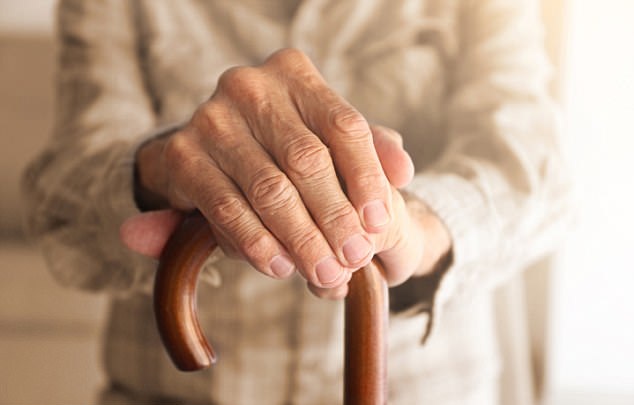Arthritis is a group of conditions characterized by joint pain that is often accompanied by a reduced range of motion, stiffness, and swelling in the joints. Individuals at risk of developing arthritis include those who:
- Are older (the risk of developing osteoarthritis increases with age)
- Are overweight or obese
- Have had a previous joint injury
- Are female (arthritis tends to occur more often in women than men)
- Have a family history of certain types of arthritis, like rheumatoid arthritis
Although it may not be possible to prevent arthritis one hundred percent of the time, there are actions you can take to significantly reduce the risk of developing the condition, and possibly even preventing its advancement.
- Klotho Therapy
Scientists are currently studying the role of a certain protein, called the klotho protein. It has been identified that levels of this naturally occurring substance in the body lower as you age. Low levels of the klotho protein have been seen to affect the immune system, increasing the risk of developing an autoimmune disease like rheumatoid arthritis, a condition that causes chronic inflammation of the joints. Additionally, studies have shown that the klotho protein can delay the onset of age-related complications, and may have the potential to prevent arthritis. Scientists are currently developing a klotho therapy that will be suitable for human treatment.
- Maintain a Healthy Weight
According to the Centers for Disease Control and Prevention, approximately 30 percent of obese adults in the United States are diagnosed with arthritis. Extra weight can place unnecessary stress on the joints, especially on the knees. This can lead to the onset of arthritis or the worsening of an existing diagnosis of arthritis. By maintaining a healthy weight, you can help relieve some of the stress on your joints, and reduce your risk of developing arthritis.
- Exercise Regularly and Focus on Low Impact Exercise
Exercise has many benefits, including:
- Maintaining the muscles around the joints, protecting them from injury
- Stimulating weight loss
- Reducing stiffness in the joints
- Promoting the lubrication of the cartilage in the joints
The best kind of exercise to protect the joints is called low-impact exercise. Low impact exercises are activities that place less stress on the joints, for example, swimming, biking, or yoga.
It’s also important to understand how to exercise correctly in order to prevent injury and minimize strain on the joints. If you’re unsure of what types of exercise are best for you, talk to your doctor.
- Avoid or Quit Smoking Cigarettes
Smoking has been linked to a significantly higher risk of developing rheumatoid arthritis. In fact, studies have shown that smoking on a daily basis can increase one’s risk of developing the condition by as much as double than that of someone who has never smoked.1 Even light smoking has been proven to increase the risk of developing the condition. If you currently smoke, talk to your doctor about how you can quit.
- Eat Foods That Reduce Inflammation
Certain foods, such as sugar and saturated fats, can cause an inflammatory response in your body. Inflammation can lead to arthritis and can also contribute to obesity, a risk factor for developing arthritis. Incorporate foods into your diet that reduce inflammation and boost the immune system, like green tea, whole grains, and foods that are rich in omega-3 fatty acids (such as fish and flax seeds).
Talk to Your Doctor if You Think You Have Signs of Arthritis
If you’re experiencing signs or symptoms of arthritis, such as pain, stiffness, and/or swelling in the joints, talk to your doctor. He/she will work with you to find a diagnosis and discuss actions that you can take to slow the progression of arthritis.
Discacciati A, Giuseppe D, Orsini N, Wolk A. Cigarette smoking and risk of rheumatoid arthritis: a dose-response meta-analysis. Arthritis Research & Therapy 2014 16:R61. https://doi.org/10.1186/ar4498
Sources:
Benefits of exercise – http://blog.arthritis.org/living-with-arthritis/exercise-benefits-for-joints/
https://www.healthline.com/health/arthritis-prevention
http://www.arthritis.org/about-arthritis/understanding-arthritis/arthritis-prevention.php
https://www.mayoclinic.org/diseases-conditions/arthritis/symptoms-causes/syc-20350772
https://www.cdc.gov/arthritis/basics/risk-factors.htm
https://www.cdc.gov/arthritis/basics/physical-activity-overview.html
http://www.arthritis.org/living-with-arthritis/arthritis-diet/foods-to-avoid-limit/
https://www.huffingtonpost.com/2012/04/18/low-impact-exercises_n_1434616.html
https://arthritis-research.biomedcentral.com/articles/10.1186/ar4498
https://www.healthline.com/health/ra-and-smoking#3
http://www.arthritis.org/about-arthritis/understanding-arthritis/what-is-arthritis.php
https://www.cdc.gov/arthritis/data_statistics/arthritis-related-stats.htm
https://www.medicinenet.com/rheumatoid_arthritis/article.htm

